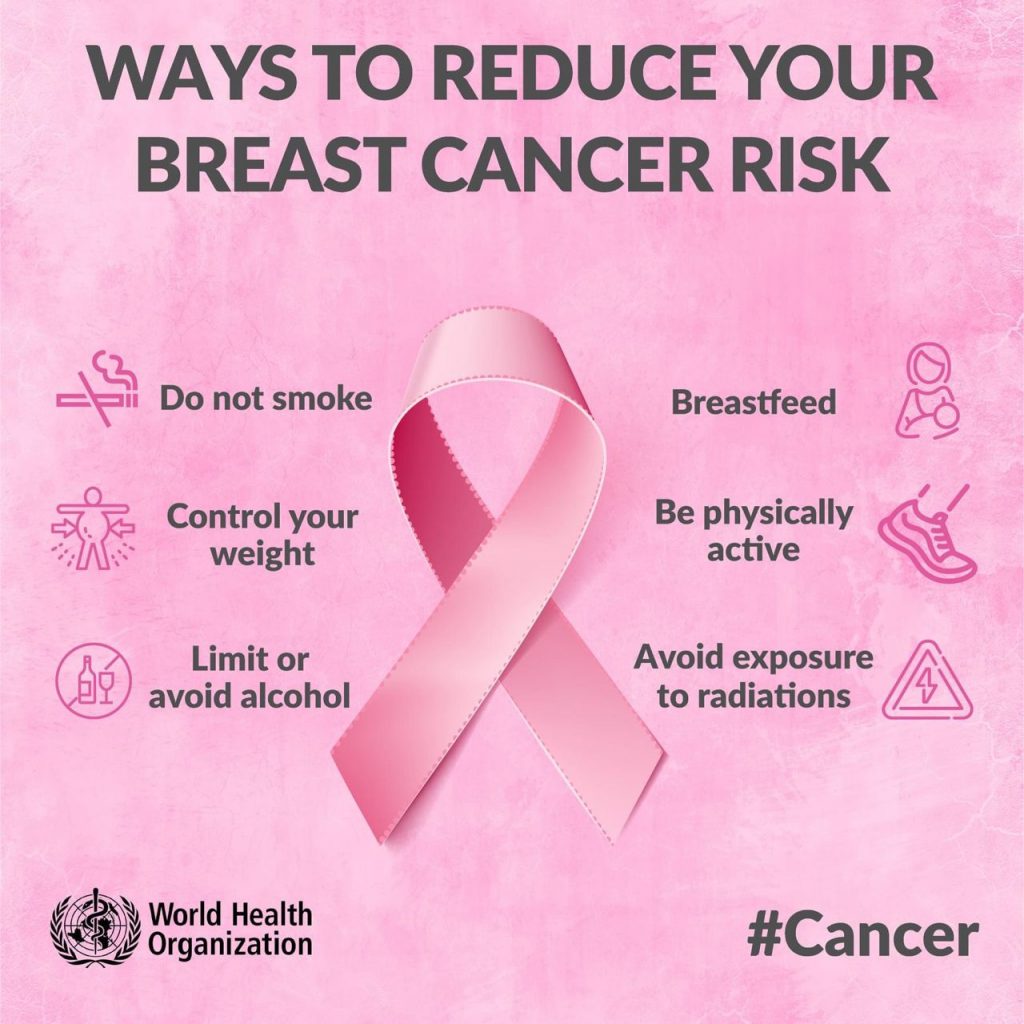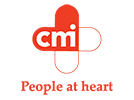Breast Cancer Awareness Month is an annual international health campaign organized by major breast cancer charities every October to increase awareness of the disease and to raise funds for research into its cause, prevention, diagnosis, treatment, and cure.
According to the World Health Organization (WHO), in 2020, there were 2.3 million women diagnosed with breast cancer and 685 000 deaths globally. As of the end of 2020, there were 7.8 million women alive who were diagnosed with breast cancer in the past 5 years, making it the world’s most prevalent cancer. Breast cancer occurs in every country of the world in women at any age after puberty but with increasing rates in later life.
Breast cancer: Who is at risk?
Breast cancer is not a transmissible or infectious disease. Unlike some cancers that have infection-related causes, such as human papillomavirus (HPV) infection and cervical cancer, there are no known viral or bacterial infections linked to the development of breast cancer.
Approximately half of the breast cancers develop in women who have no identifiable breast cancer risk factor other than gender (female) and age (over 40 years).
Certain factors increase the risk of breast cancer. Though hereditary factors can’t be changed, doctors say women can lower their risk by making lifestyle changes like eating well and staying active.
Behavioural choices and related interventions that reduce the risk of breast cancer include:
- Prolonged breastfeeding;
- Regular physical activity;
- Weight control;
- Avoidance of harmful use of alcohol;
- Avoidance of exposure to tobacco smoke;
- Avoidance of prolonged use of hormones; and
- Avoidance of excessive radiation exposure.

Unfortunately, even if all of the potentially modifiable risk factors could be controlled, this would only reduce the risk of developing breast cancer by at most 30%.
The female gender is the strongest breast cancer risk factor. Approximately 0.5-1% of breast cancers occur in men. The treatment of breast cancer in men follows the same principles of management as for women.
Family history of breast cancer increases the risk of breast cancer, but the majority of women diagnosed with breast cancer do not have a known family history of the disease. Lack of a known family history does not necessarily mean that a woman is at reduced risk.
Breast cancer warning signs
Breast cancer most commonly presents as a painless lump or thickening in the breast. It is important that women finding an abnormal lump in the breast consult a health practitioner without a delay of more than 1-2 months even when there is no pain associated with it.
Seeking medical attention at the first sign of a potential symptom allows for more successful treatment. Generally, symptoms of breast cancer include:
- A breast lump or thickening;
- Alteration in size, shape or appearance of a breast;
- Dimpling, redness, pitting or other alteration in the skin;
- Change in nipple appearance or alteration in the skin surrounding the nipple (areola);
- Abnormal nipple discharge.
If you notice any of these symptoms, contact your health care provider as soon as possible.
Breast cancer screenings
Detecting breast cancer early is key to the best possible outcomes.
Undiagnosed breast cancer can lead to serious complications and even death. Women should become familiar with their breasts and conduct regular self-exams to ensure there are no lumps or other red flags.
A mammogram, or X-ray of the breast, is a proven method of determining if you have any breast abnormalities. Although mammograms don’t reduce the risk of developing breast cancer, screening does allow your doctor to detect breast cancer in its early stages, which is important for effective diagnosis and treatment.
Start having yearly mammograms at age 40. If you have a family history of breast cancer, start your exams 10 years prior to your family member’s diagnosis. For example, begin yearly mammograms at 37 if your mother was diagnosed at 47.
Breast cancer treatment
Breast cancer treatment can be highly effective, achieving survival probabilities of 90% or higher, particularly when the disease is identified early.
Breast cancer is treated in several ways. It depends on the kind of breast cancer and how far it has spread. People with breast cancer often get more than one kind of treatment.
Treatment generally consists of:
- Surgery. An operation where doctors cut out cancer tissue.
- Chemotherapy. Using special medicines to shrink or kill the cancer cells. The drugs can be pills you take or medicines given in your veins, or sometimes both.
- Hormonal therapy. Blocks cancer cells from getting the hormones they need to grow.
- Biological therapy. Works with your body’s immune system to help it fight cancer cells or to control side effects from other cancer treatments.
- Radiation therapy. Using high-energy rays (similar to X-rays) to kill the cancer cells.
The effectiveness of breast cancer therapies depends on the full course of treatment. Partial treatment is less likely to lead to a positive outcome.
This October, be breast-conscious and help raise awareness for breast cancer prevention.
Sources:
https://www.cdc.gov/cancer/breast/basic_info/treatment.htm
https://www.who.int/news-room/fact-sheets/detail/breast-cancer





